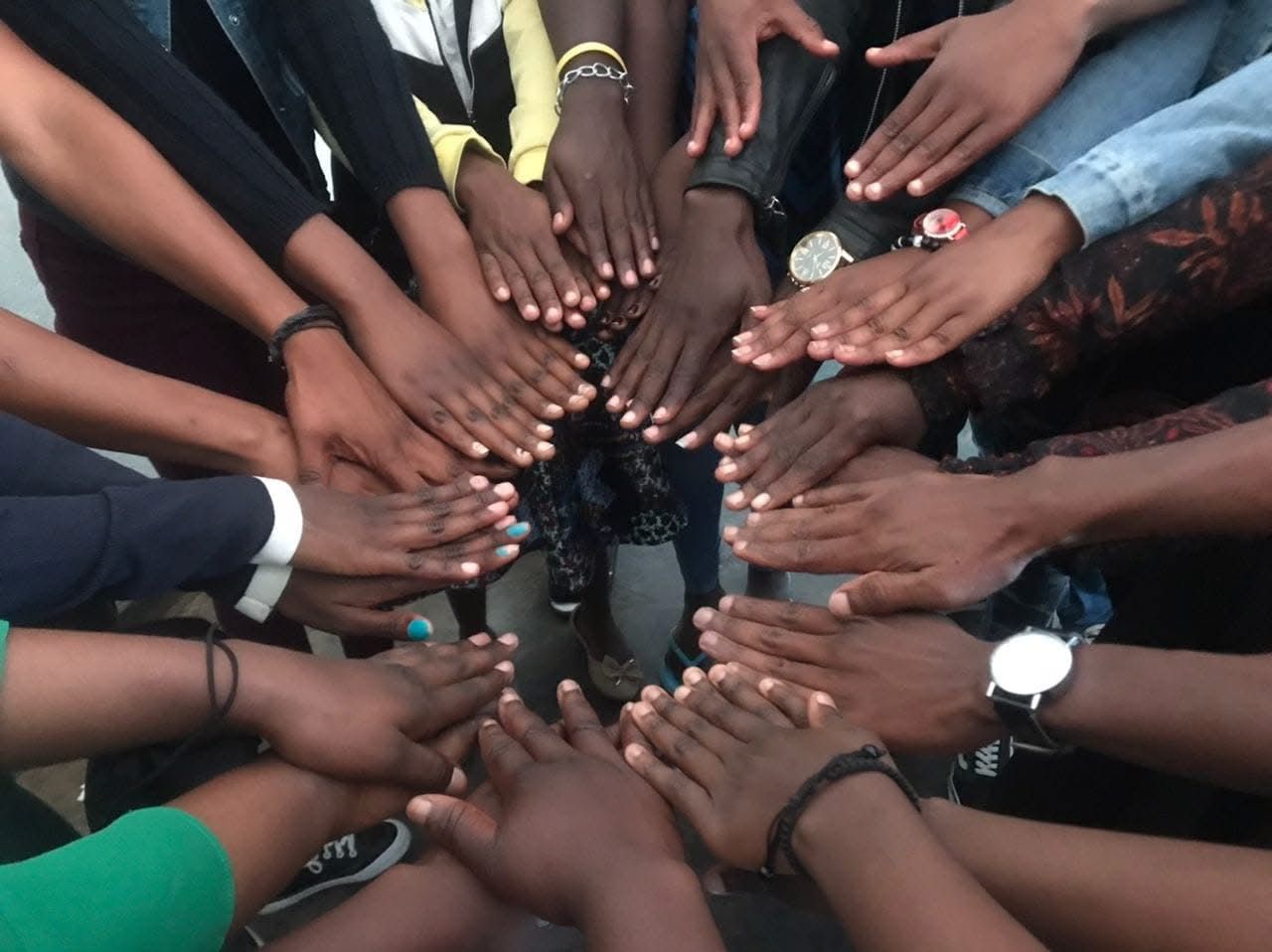Guest Authors: Aness Simon and Tamanda Chingoli, Team HushBuddy, Malawi
This blog post is the first in a series written by teams participating in the 2025 INSPIRE Designathon. Chosen from hundreds of submissions, these teams participated in a dynamic three-day sprint to sharpen their ideas and pitch innovative solutions to a panel of expert judges. Each team received funding to implement, adapt, and scale-up HIV interventions for adolescents and young adults over the coming year.
Hush Buddy is a team of four from Malawi. When we first started working with adolescents and young adults (AYA) living with HIV, we saw the difference a safe space could bring. Through the Comfort Corner—a youth-friendly drop-in centre—we offered support groups, mental health counselling, vocational training and antiretroviral therapy (ART) adherence support. However, we noticed that our target population was not patronizing the Comfort Corner as much as we had hoped. Some were afraid of being seen at the clinic and having their status exposed. Others could not afford to spare time or the cost of travel for in-person sessions. As much as they wanted help, fear and circumstances kept them away.

The birth of Hush Buddy
We wanted to take everything good about Comfort Corner and make it accessible on any phone, whether smart or not. We answered the questions, “What if support didn’t require physically showing up?” and “What if help could meet young people exactly where they are, safely, quietly and privately?”
Hush Buddy is our answer. Hush Buddy is a mobile app based on Unstructured Supplementary Service Data (USSD), meaning it works on any phone and without needing internet or data—something the average Malawian does not have access to. With a few keypad presses, AYA can access mental health check-ins, connect with an accountability buddy, get medication reminders, or find a vocational training referral. Anonymously.
One challenge has been translating the warmth of in-person sessions and the sense of community that the Comfort Corner brings into a digital format. Some users weren’t sure how to use the USSD system or didn’t trust that help could really come from their phones. Others started using it but dropped off after a few tries. We had to simplify the language and make it feel like someone was on the other side. That human touch, even on a keypad, matters. We are learning that privacy is just as powerful as presence. When someone feels safe enough to reach out, that’s when real change starts.
Participating in the INSPIRE Designathon
Coming into the INSPIRE Designathon, we knew what we wanted to do, but we didn’t know how to explain it in a way that made sense beyond our circles. As nurses and program leads, we were used to thinking in care plans, community outreach, and session scheduling, not frameworks and logic models.
At first, we were nervous. The room was full of academics, researchers, and people using language that felt so far from our everyday work. But we listened. Slowly, things started to click. Through the mentorship sessions, we learned how to present our idea clearly and build a real pitch deck. The RE-AIM (Reach, Effectiveness, Adoption, Implementation, Maintenance) framework helped us look at Hush Buddy from all angles.
We also learned how to collect meaningful qualitative data using focus group discussions, and how that data could be used to improve the service, not just for monitoring. Before the Designathon, we saw feedback as something you did at the end. Now, we see it as something that shapes the process from the start.
The participatory learning meetings continue to give us more than technical knowledge. The Designathon has given us a community. Hearing from other teams reminded us that everyone is learning as they go. We saw people trying, failing, reworking and that made space for us to show up honestly, too. It’s easy to feel like you’re behind when you’re still figuring things out, but through these meetings, we realized that showing up with questions is part of what makes this work real.
Piloting the Hush Buddy app
One of our biggest lessons came after we launched the pilot. We realized we had made assumptions. We thought a USSD platform would be easy for anyone to use. It wasn’t. Some users were confused by the menu. Others didn’t know whether pressing “1” would lead to real help or just a message. And a few didn’t return after trying it once.
We didn’t take that lightly. We held a feedback session with some of our youth participants and asked what would make it easier. The responses were honest: “Make it shorter,” “Say it in Chichewa,” “Tell us what to expect first.” We used that feedback to simplify the menu, adjust the tone of our messages, and rework our scripts to explain the steps more clearly. This process reminded us that youth are not just users; they are co-creators.
We want to see Hush Buddy reach youth in rural districts where HIV support is even harder to access and stigma is higher. We’re exploring partnerships with mobile networks like Airtel and TNM so that the USSD code can be zero-rated and truly free to use. Long-term, we hope the Ministry of Health and other national partners will adopt it into Malawi’s broader HIV support system, especially as a digital bridge for AYA transitioning out of Teen Clubs.
The process of building Hush Buddy has helped us grow as a team—from struggling to turn our idea into a pitch, to confidently presenting it to reviewers, to rewriting menus based on real user voices. We have been stretched in the best way. Innovation isn’t always tech-heavy. Sometimes, it’s about quietly creating something that meets people exactly where they are.
For us, Hush Buddy is not just a mobile tool. It’s a promise that support doesn’t have to be loud or public to be powerful. It can be quiet. It can be private. And it can still save lives.
